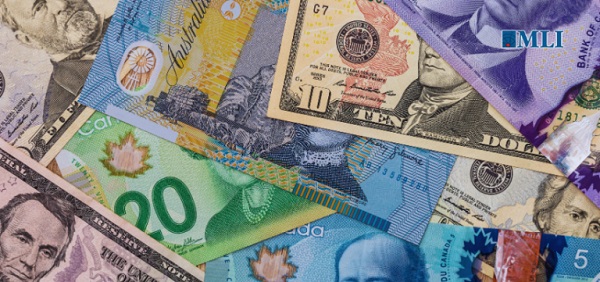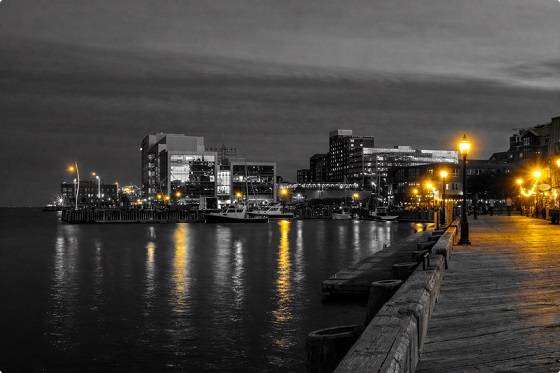Business
Canada can – and should – crack down on trade-based money laundering

From the Macdonald Laurier Institute
By Jamie Ferrill for Inside Policy
Neglecting to take decisive action enables organized criminal networks whose activities cause significant harm on our streets and those of our international partners.
Financial crime bears considerable political and economic risk. For the incoming Trump administration, the threat that transnational organized crime and the illicit financial flows pose to global financial stability is a top priority. The threat of tariffs by the Trump administration makes the costs to Canada in enabling global financial crime all too apparent. In addition to the cost of tariffs themselves, the associated reputational risk and loss of confidence in Canada’s financial system has implications for investments, credit, supply chains, and bilateral co-operation and agreements.
Canada’s proximity to major international markets, stable economy, high standard of living, and strong institutions and frameworks make it an attractive place to do business: for both legitimate and criminal enterprises.
Trade is a key contributing sector for Canada’s economic security. It represents two-thirds of Canada’s GDP, and exports alone support nearly 3.3 million Canadian jobs. Trade is also highly vulnerable to criminal exploitation. Ineffective oversight, regulatory complexity, and lagging technology adoption, coupled with a lack of export controls, make it possible to move vast proceeds of crimes, such as those from drug trafficking, human trafficking, corruption, and tax evasion through the global trade system.
These vulnerabilities are well-known by transnational organized crime groups. They are able to effectively move billions of dollars of dirty money through the global trade system every year, a method commonly referred to as Trade-Based Money Laundering (TBML).
While any statistics must be interpreted with caution, evidence shows that TBML is a prevalent method of money laundering.
What is it?
There are several types of Trade-Based Financial Crimes such as terrorism financing through trade, sanctions evasion, and simply trade fraud. However, the TBML definition is necessarily specific. Essentially here, TBML is a money laundering method: the processing of criminal proceeds to disguise their illegal origin. TBML involves the movement of value through the global trade system to obfuscate the illicit origin. This is usually done through document fraud: undervaluing, overvaluing, phantom shipping, or multiple invoicing. Different techniques employ different aspects of the supply chain. And TBML may be just one method used within larger money laundering operations.
By way of example, US authorities allege that two Chinese nationals living in Chicago laundered tens of millions of dollars for the Sinaloa and Jalisco Cartels. Drugs were smuggled into the United States and sold throughout the country. The proceeds from these sales were collected by the Chinese nationals. Those proceeds were used to purchase bulk electronics in the United States, which were then shipped – with a falsified value – to co-conspirators in China, who sold them locally. The legitimacy provided by the electronics sales and the trade transaction provide cover to “clean” proceeds from precursor crime.
Either the importer and/or the exporter of the goods can shift value. Chances here are the electronics shipped were undervalued: on leaving the country, they are declared at a (much) lower value than they are actually worth. The importer in China pays the undervalued invoice, then sells the goods for what they are worth. The profit from those electronics now appears clean, since it was used for a “legitimate” sale. The ensuing value gap can be transferred informally or stored as illicit wealth. The value has now shifted, without fiat currency leaving the country of origin.
But the cycle does not stop there. The value and money itself continue to traverse around the world, through various intermediaries such as financial institutions or cryptocurrency exchanges. It then goes right back into the system and enables the very crimes and organized crime groups that generated it in the first place. It is, in short, the business model of organized crime.
The Canadian problem
Ultimately, the proceeds of crime that have been legitimised through TBML (and other money laundering methods) supports the criminal enterprises that generated the value in the first place. In the example, these are prolific cartels who have been behind the fentanyl crisis, migrant trafficking and abuse, corruption, and widespread violence that destabilizes communities and undermines governments across North America and beyond.
With new actors, drug routes, and ways of doing business, the cartels are very much active in Canada. The Sinaloa cartel in particular has established a significant presence in Canada where it controls the cocaine market, manufactures and distributes fentanyl, and is embedded in local criminal networks. This increases Canada’s role as a strategic location for drug trafficking and a base to export abroad, notably to Europe, the US, and Australia.
Hells Angels, Red Scorpions, ’Ndrangheta, and other organized crime groups are also exploiting Canada’s strategic location using their transnational links. These groups are active in criminal activities that generate proceeds of crime, which they launder through Canadian institutions. From drug trafficking to extortion to human and sex trafficking, the foundation of organized crime relies on generating and maximizing profits. The proceeds generally need to be laundered; otherwise, there are direct lines back to the criminal organizations. They are, without a doubt, exploiting the trade sector; the very sector that provides so much economic security for Canada.
Canada’s regulation, reporting, and prosecution record for money laundering is notoriously weak. Its record for regulation, reporting, and prosecution for trade-based financial crimes, namely here TBML, is even weaker.
As financial institutions and other regulated entities face increased scrutiny following the TD Bank scandal and the Cullen Commission’s inquiry into money laundering in BC, more criminal activity is likely to be displaced into the trade sector and the institutions it comprises.
TBML is difficult for financial institutions to detect, especially given that 80 per cent of trade is done through open accounts. It exploits established trade structures that are meant to protect the system –like documentation and invoicing processes – by manipulating transactions outside traditional payment systems, which requires more sophisticated anti-money laundering strategies to address these hidden vulnerabilities.
Addressing the problem
Trade is a gaping vulnerability. Yet, it attracts minimal attention in countering transnational financial crime. Containing the fentanyl crisis for one requires a collaborative effort to bolster supply chains and the trade sector against financial crime. This means global cooperation, technological advances (such as blockchain technology), appropriate resourcing, more scrutiny on high-risk countries and shippers, and regulatory innovation.
But political will is in short supply. The federal government’s Budget 2024 and the resulting proposed Regulations Amending Certain Regulations Made Under the Proceeds of Crime (Money Laundering) and Terrorism Financing Act will grant CBSA new authorities to counter TBML, but limited resources to make good on them. And CBSA cannot do it alone.
Transnational organized crime and the illicit financial flows that support it poses a threat to global financial stability. The enabling of financial crime hurts Canada’s reputation abroad. With a new political regime emerging in the US, Canada cannot afford to be seen as a weak link. Loss of confidence in a country and its financial system has implications for investments, credit, supply chains, and bilateral cooperation and agreements.
By neglecting to take decisive action, we inadvertently enable organized criminal networks whose activities cause significant harm on our streets and those of our international partners. With profits as their primary driver, it is imperative that we scrutinize financial pathways to disrupt these illicit operations effectively.
Organized crime groups are not bound by privacy laws, bureaucracy, political agendas, and government budgets. They are continually evolving and staying many steps ahead of what Canada is equipped to control: technologically, geographically, strategically, logistically, and tactically. Without appropriate regulations, technological advances, and resources in place, we will continue to be a laggard in countering financial crime.
More systematic change is needed across regulatory frameworks, law enforcement coordination and resourcing, and international partnerships to strengthen oversight, close loopholes, and enhance detection and disruption. It would be a low-cost signal to the Trump administration that Canada is committed to upping its game.
Jamie Ferrill is senior lecturer in Financial Crime at Charles Sturt University and co-editor of Dirty Money: Financial Crime in Canada.
Business
Federal funds FROZEN after massive fraud uncovered: Trump cuts off Minnesota child care money

The Trump administration has cut off all federal child care payments to Minnesota, ordering a sweeping audit of the state’s day care system as investigators dig into what officials describe as one of the largest fraud schemes ever tied to social service programs.
“We have frozen all child care payments to the state of Minnesota,” Deputy Health and Human Services Secretary Jim O’Neill wrote Tuesday afternoon, saying the move comes after mounting evidence that taxpayer dollars were being siphoned to sham or non-operational day care centers. The freeze follows a viral investigative video that put a national spotlight on facilities across Minneapolis that were receiving large sums of public money despite appearing closed or barely functioning.
According to Alex Adams, assistant secretary at HHS’s Administration for Children and Families, Minnesota has already received roughly $185 million in federal child care funding this year alone. Those funds, the administration says, will remain locked down until the state can demonstrate that payments are being used lawfully. “Funds will be released only when states prove they are being spent legitimately,” Adams said.
We have frozen all child care payments to the state of Minnesota.
You have probably read the serious allegations that the state of Minnesota has funneled millions of taxpayer dollars to fraudulent daycares across Minnesota over the past decade.
Today we have taken three actions… pic.twitter.com/VYbyf3WGop
— Deputy Secretary Jim O'Neill (@HHS_Jim) December 30, 2025
O’Neill accused Minnesota officials of allowing abuse to fester for years, alleging the state has “funneled millions of taxpayer dollars to fraudulent daycares across Minnesota over the past decade.” To halt further losses, HHS outlined a series of immediate enforcement steps. Going forward, states seeking reimbursement through the Administration for Children and Families will be required to provide receipts or photographic proof documenting how funds are spent.
The department has also formally demanded that Gov. Tim Walz order a “comprehensive audit” of the day care centers flagged by investigators. O’Neill said the review must include attendance records, licensing documents, complaints, investigative files, and inspection reports. He pointed directly to a video published Friday by YouTuber Nick Shirley, who visited multiple Minneapolis-area centers listed as receiving millions in public funds but found locations that appeared closed or inactive.
In addition, HHS has launched a dedicated fraud hotline and email address at childcare.gov to encourage tips from parents, providers, and the public. “We have turned off the money spigot and we are finding the fraud,” O’Neill said, urging anyone with information to come forward.
Federal prosecutors say the scope of the alleged abuse is staggering. Authorities have already confirmed at least $1 billion in fraud tied to Minnesota child care programs, with 92 people charged so far. The U.S. Attorney’s Office has warned the total could ultimately reach as high as $9 billion as investigators continue combing through records.
The funding freeze marks one of the most aggressive crackdowns yet by the Trump administration on state-run social programs accused of lax oversight, sending a clear message that federal dollars will not flow until Minnesota can account for where the money went — and who was cashing in.
Business
The Real Reason Canada’s Health Care System Is Failing

From the Frontier Centre for Public Policy
By Conrad Eder
Conrad Eder supports universal health care, but not Canada’s broken version. Despite massive spending, Canadians face brutal wait times. He argues it’s time to allow private options, as other countries do, without abandoning universality.
It’s not about money. It’s about the rules shaping how Canada’s health care system works
Canada’s health care system isn’t failing because it lacks funding or public support. It’s failing because governments have tied it to restrictive rules that block private medical options used in other developed countries to deliver timely care.
Canada spends close to $400 billion a year on health care, placing it among the highest-spending countries in the Organization for Economic Co-operation and Development (OECD). Yet the system continues to struggle with some of the longest waits for care, the fewest doctors per capita and among the lowest numbers of hospital beds in the OECD. This is despite decades of spending increases, including growth of 4.5 per cent in 2023 and 5.7 per cent in 2024, according to estimates from the Canadian Institute for Health Information.
Canadians are losing confidence that government spending is the solution. In fact, many don’t even think it’s making a difference.
And who could blame them? Median health care wait times reached 30 weeks in 2024, up from 27.7 weeks in 2023, which was up from 27.4 weeks in 2022, according to annual surveys by the Fraser Institute.
Nevertheless, politicians continue to tout our universal health care system as a source of national pride and, according to national surveys, 74 per cent of Canadians agree. Yet only 56 per cent are satisfied with it. This gap reveals that while Canadians value universal health care in principle, they are frustrated with it in practice.
But it isn’t universal health care that’s the problem; it’s Canada’s uniquely restrictive version of it. In most provinces, laws restrict physicians from working simultaneously in public and private systems and prohibit private insurance for medically necessary services covered by medicare, constraints that do not exist in most other universal health care systems.
The United Kingdom, France, Germany and the Netherlands all maintain universal health care systems. Like Canada, they guarantee comprehensive insurance coverage for essential health care services. Yet they achieve better access to care than Canada, with patients seeing doctors sooner and benefiting from shorter surgical wait times.
In Germany, there are both public and private hospitals. In France, universal insurance covers procedures whether patients receive them in public hospitals or private clinics. In the Netherlands, all health insurance is private, with companies competing for customers while coverage remains guaranteed. In the United Kingdom, doctors working in public hospitals are allowed to maintain private practices.
All of these countries preserved their commitment to universal health care while allowing private alternatives to expand choice, absorb demand and deliver better access to care for everyone.
Only 26 per cent of Canadians can get same-day or next-day appointments with their family doctor, compared to 54 per cent of Dutch and 47 per cent of English patients. When specialist care is needed, 61 per cent of Canadians wait more than a month, compared to 25 per cent of Germans. For elective surgery, 90 per cent of French patients undergo procedures within four months, compared to 62 per cent of Canadians.
If other nations can deliver timely access to care while preserving universal coverage, so can Canada. Two changes, inspired by our peers, would preserve universal coverage and improve access for all.
First, allow physicians to provide services to patients in both public and private settings. This flexibility incentivizes doctors to maximize the time they spend providing patient care, expanding service capacity and reducing wait times for all patients. Those in the public system benefit from increased physician availability, as private options absorb demand that would otherwise strain public resources.
Second, permit private insurance for medically necessary services. This would allow Canadians to obtain coverage for private medical services, giving patients an affordable way to access health care options that best suit their needs. Private insurance would enable Canadians to customize their health coverage, empowering patients and supporting a more responsive health care system.
These proposals may seem radical to Canadians. They are not. They are standard practice everywhere else. And across the OECD, they coexist with universal health care. They can do the same in Canada.
Alberta has taken an important first step by allowing some physicians to work simultaneously in public and private settings through its new dual-practice model. More Canadian provinces should follow Alberta’s lead and go one step further by removing legislative barriers that prohibit private health insurance for medically necessary services. Private insurance is the natural complement to dual practice, transforming private health care from an exclusive luxury into a viable option for Canadian families.
Canadians take pride in their health care system. That pride should inspire reform, not prevent it. Canada’s health care crisis is real. It’s a crisis of self-imposed constraints preventing our universal system from functioning at the level Canadians deserve.
Policymakers can, and should, preserve universal health care in this country. But maintaining it will require a willingness to learn from those who have built systems that deliver universality and timely access to care, something Canada’s current system does not.
Conrad Eder is a policy analyst at the Frontier Centre for Public Policy.
-

 Business2 days ago
Business2 days agoDisclosures reveal Minnesota politician’s husband’s companies surged thousands-fold amid Somali fraud crisis
-

 Alberta2 days ago
Alberta2 days agoThe Canadian Energy Centre’s biggest stories of 2025
-

 Business2 days ago
Business2 days agoResurfaced Video Shows How Somali Scammers Used Day Care Centers To Scam State
-

 Business1 day ago
Business1 day agoThe Real Reason Canada’s Health Care System Is Failing
-

 Business2 days ago
Business2 days agoMinneapolis day care filmed empty suddenly fills with kids
-

 Business2 days ago
Business2 days agoOttawa Is Still Dodging The China Interference Threat
-

 Opinion15 hours ago
Opinion15 hours agoGlobally, 2025 had one of the lowest annual death rates from extreme weather in history
-

 Business23 hours ago
Business23 hours agoFederal funds FROZEN after massive fraud uncovered: Trump cuts off Minnesota child care money




